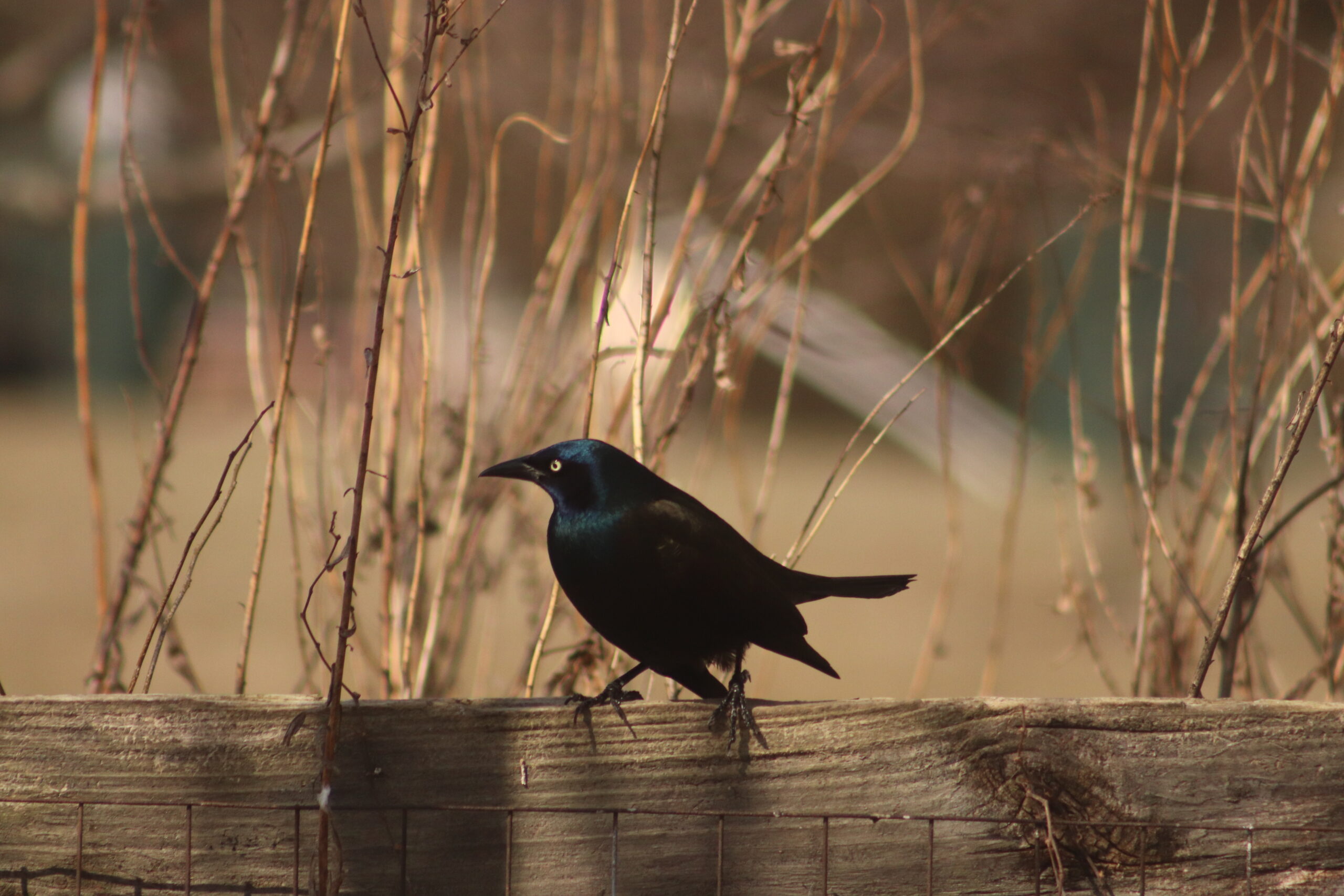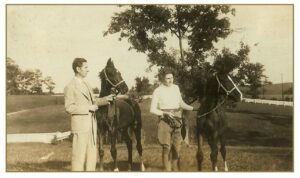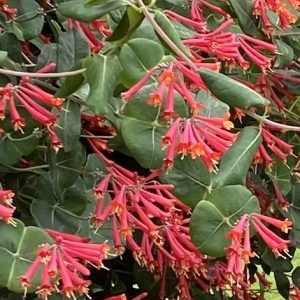by Jacob Crider
Throughout the year many species of Blackbirds spend time migrating, nesting, and socializing in the state of Kentucky. Members of the family Icteridae, blackbirds are highly social and will form huge flocks during early spring and late winter here in the Bluegrass State. Icteridae also includes colorful songbirds like the Baltimore Oriole and Eastern Meadowlark. In the fall, blackbirds become less abundant as larger groups move south for the winter. However, a few species will stick around in low numbers for the winter, including the stark yet beautiful Common Grackle (Quiscalus quiscula).
Common Grackles are a large-bodied blackbird species, approaching the size of a crow with a slightly slenderer build. Their bodies appear almost completely black with small notes of brown and a bright yellow to white eye. When the sun shines right on their head, necks and wings, their black feathers refract the light in the form of gorgeous blues, violets, and bronze. They possess a long pointy beak that they use primarily for eating insects and small invertebrates. In wintertime, they become more granivorous and can be seen spending lots of time foraging in corn and wheat fields eating the plentiful fallen seeds leftover from the autumnal harvest. In fall, they can be seen eating fruits, seeds, and the last few insects that decide to stick around until the cold weather moves in. They are known to frequently visit bird feeders, often swarming feeding stations along with cowbirds and Red-winged Blackbirds the moment you put food out, and can consume great amounts of millet and corn.
In relation to humans, flocking blackbirds such as grackles are extremely valuable to have around farmland and agricultural areas. They are an exceptional form of insect control, especially in the spring and summer months when they have chicks to feed and large flocks descend upon newly emerging plots to feast on insect prey. They can also help by clearing waste grain from old farm fields to prepare for the next year of seed sowing.
Grackle habitats include grasslands, savannas, fields, farms, swamps, marshes, urban areas and young woodlands. They usually stay away from mature forests with dense cover, although they may pass through these areas during migration. Their call sounds almost robotic, with boisterous screeches and metallic sounding chirps often ascending quickly in pitch and volume. Pictured is a Common Grackle visiting the bird blind at Creasey Mahan on sunny day, showing some of its bronzy teal color.



